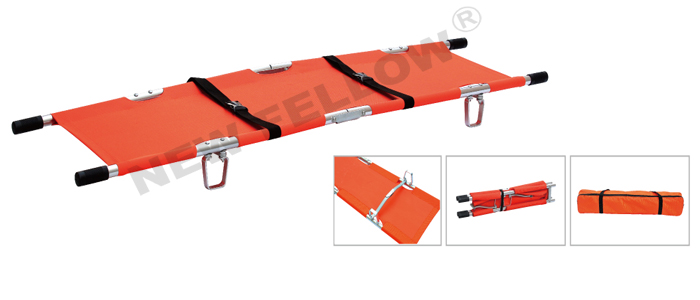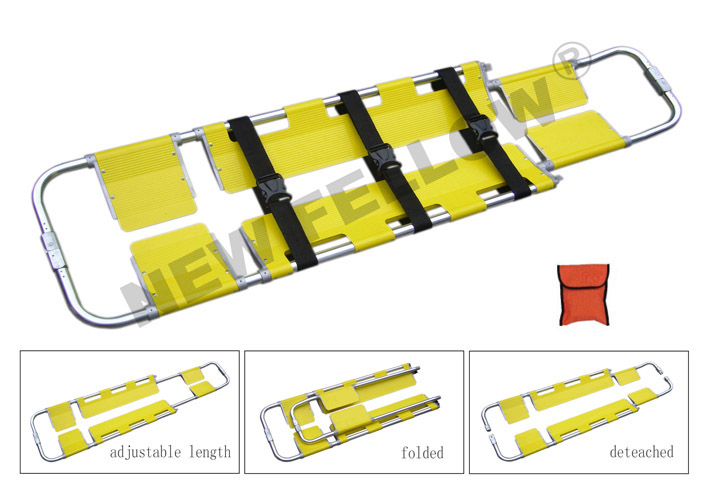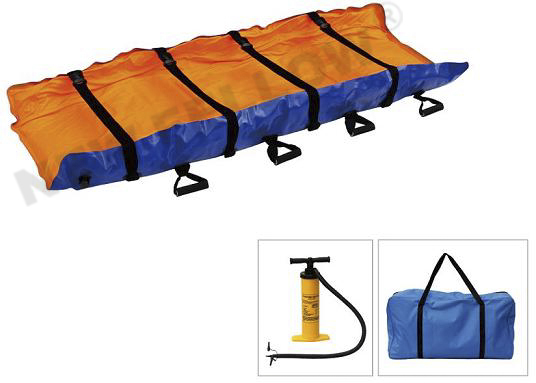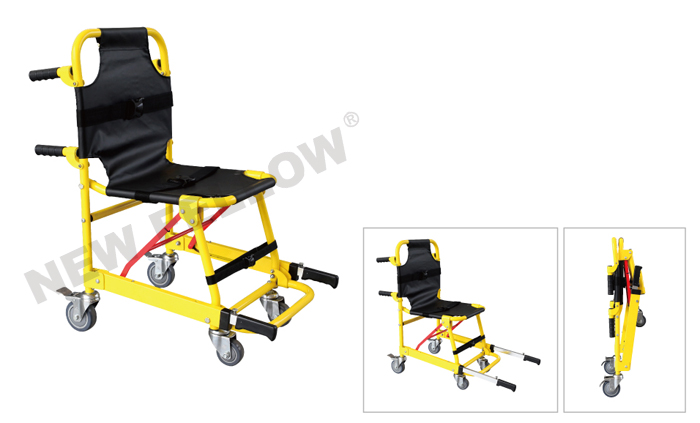What are the main types of emergency stretchers and their characteristics?
Emergency stretchers are devices used to transfer patients from accident sites or medical emergency points to medical facilities, and there are various types suitable for different emergency situations. The following are some common types of emergency stretchers, as well as their characteristics and application scenarios:
Folding stretcher:

Features: Folding stretchers are usually lightweight, easy to carry, and stored. They can be quickly deployed for easy use in emergency situations.
Application scenario: Suitable for emergency situations that require quick response and movement, such as outdoor activities, disaster scenes, or emergency rescue.
Hard stretcher:
Features: Hard stretchers are usually made of sturdy materials, such as aluminum alloy or plastic. They have the characteristics of stable structure and no deformation, providing better support.
Application scenario: Suitable for emergency situations that require higher support and stability, such as patients with fractures or spinal injuries.
Scoop Stretcher

Features: The Scoop Stretcher is equipped with a clutch device at both ends, which can be separated into left and right parts; It is possible to quickly shovel the patient in without moving them, avoiding secondary harm to the patient; The length of the stretcher can be adjusted according to the actual height of the patient and can be folded;
Application scenario: Mainly used in ambulances, hospitals, and emergency centers.
Vacuum Mattress Stretcher

Features: The Vacuum Mattress Stretcher is fixed on the patient's body by vacuuming, providing stable support. This type of stretcher can reduce patient movement during transportation and lower the risk of secondary injury.
Application scenario: Suitable for situations that require special stable support, such as patients with spinal injuries or multiple fractures.
Suspension stretcher:
Features: Suspension stretchers are usually equipped with lifting rings and can be suspended by ropes or chains. They are suitable for emergency situations where patients need to be lowered or lifted by slings.
Application scenario: Suitable for high difficulty rescue tasks, such as cliff rescue or water rescue.
Rescue stretcher (folding rescue stretcher):
Features: Rescue stretchers have stronger load-bearing capacity and structural strength, and are usually used for special rescue missions. Folding rescue stretchers are convenient to carry and store.
Application scenario: Suitable for complex situations that require rapid rescue and transportation, such as high-altitude rescue or collapse accident rescue.
The selection of a suitable emergency stretcher depends on the specific application scenario, patient condition, and transportation needs. When using emergency stretchers, medical professionals should make the correct choices and operations based on the patient's condition and emergency environment.
Water stretcher:
Features: Water stretchers are usually made of buoyancy materials, allowing them to float on the water. They usually have waterproof and anti-corrosion properties.
Application scenario: Suitable for water rescue situations, such as water accidents, drowning rescue, etc.
Electric stretcher:
Features: The electric stretcher is equipped with an electric drive system, which can assist in transporting patients through electricity. These stretchers typically have adjustable height and tilt angles.
Application scenario: Suitable for situations that require long-distance transportation or convenient patient movement within medical facilities.
Multi functional stretcher:
Features: The multifunctional stretcher integrates various functions, such as adjustable headboard, side rails IV infusion stents, etc. to provide more comprehensive care.
Application scenario: Suitable for multifunctional applications within medical facilities, such as emergency rooms, operating rooms, etc.
Stair Stretcher (wheelchair stretcher):

Features: The Stair Stretcher has a seat shape, allowing patients to maintain a sitting position during transportation. They are usually used in situations where patients need to remain seated.
Application scenario: Suitable for situations where patients need to maintain a sitting position during transportation, such as before and after surgery or patients who require a seat during transportation.
Protective stretcher (isolation stretcher):
Features: Protective stretchers are usually equipped with protective covers or curtains, used to isolate patients with infectious diseases and reduce the risk of transmission.
Application scenario: Suitable for transporting infectious disease patients and reducing their contact with the surrounding environment.
Children's stretcher:
Features: The size of the children's stretcher is small, suitable for the physical characteristics of children. They typically have adjustable seats and supports to ensure safety and comfort for children.
Application scenario: Suitable for pediatric emergency and transportation, ensuring that children receive appropriate care during the medical process.
Pneumatic stretcher:
Features: Pneumatic stretchers use pneumatic principles to support patients through air pressure, providing soft support. They are usually suitable for situations where vibration during patient transportation needs to be reduced.
Application scenario: Suitable for situations where the patient's body is more sensitive and needs to reduce transportation vibrations.
When choosing an emergency stretcher, comprehensive consideration should be given to actual needs, patient characteristics, and usage environment. Different types of stretchers work in different scenarios, and medical staff should have the ability to correctly select and use stretchers based on specific situations.

 Official WeChat
Official WeChat